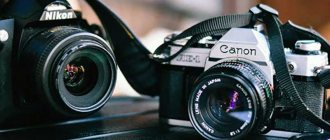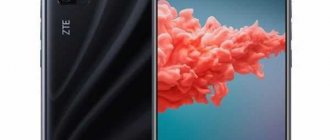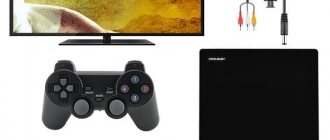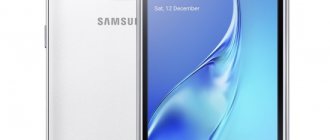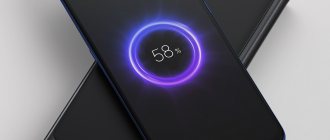DSLR cameras are a popular choice for new photographers as they offer long battery life, excellent image quality, a wide range of lenses and full manual control. They put the photographer in control of their travels and are available at a wide range of price points to suit most budgets. We've put together a detailed and useful guide to the best DSLR cameras. We'll help you decide if a DSLR is right for you, advise you on how to choose the best DSLR camera, and share a list of the best DSLR cameras currently available at various price points. We also give tips on how to get the most out of your new DSLR camera, and tips for protecting your camera while traveling.
What is a SLR camera?
The acronym DSLR stands for Digital Single Lens Reflex, which is a special type of camera that has a mirror inside the camera body and uses a digital sensor. These cameras have largely replaced the Single Lens Reflex (SLR) cameras that have been used by photographers for decades. The main difference is that film cameras use rolls of film, while DSLR cameras have a digital sensor instead.
Other than the move from film to digital for image storage, the basic technology of this type of camera hasn't changed much.
First, let's explain what a DSLR or single lens reflex camera is. The main part of a DSLR (or DSLR) camera that differs from other types of cameras such as compact cameras, mirrorless cameras or smartphone cameras is that there is a mirror inside the camera that sits inside the camera body between the lens and the camera sensor. If you remove the lens from a DSLR camera and look into the lens mount area, you will see this mirror.
This mirror captures the light coming through the camera lens and reflects it to the camera's optical viewfinder. This viewfinder is where you place your eye when you want to compose an image.
Pressing the camera's shutter button will cause the mirror to flip up and allow light to pass through the shutter curtain and onto the camera sensor. This is why the optical viewfinder goes out when you press the shutter button.
The way a DSLR camera works has a number of advantages from a photography perspective. First, when you look through an optical viewfinder, you see what the camera sees because the light you see passes through the lens. This makes focus adjustment more precise.
An optical viewfinder is also very battery efficient since you don't have to turn on the screen to see what the camera is seeing like you do with other types of cameras like mirrorless cameras or point-and-shoot cameras.
DSLRs also have a number of other notable features, some of which they share with other cameras. You can change lenses, and most of them have larger sensors than, say, a point-and-shoot camera, full manual control, and great performance.
The technology is also very well established, meaning there is a wide range of DSLR cameras to choose from at a wide range of prices, as well as a wide range of lenses to choose from.
How to take photographs correctly: Canon for beginners
It is known that in Auto mode the camera independently selects the settings in such a way that the result is a suitable exposure. But it’s worth considering that if you shoot in difficult lighting, then even the coolest camera will not always be able to cope with its task. Moreover, you want to learn how to take photographs with a Canon DSLR, using all the possibilities, and not just randomly press a button and wait for your luck. You can take a good photo only after you master the basic settings. Only then will you intuitively figure out how to photograph on 500d, 550d, 7d, 1100d, 600d, 650d, 60d, 1000d and other “d”.
There are three main settings and all of them are related to light in one way or another:
- Aperture is the size of the “hole” opened by the camera that allows light to pass through. The wider the aperture is open, the more light there is in the picture: everything is logical here.
- Shutter speed is the time for which you allow light to enter the camera’s sensor.
- Photosensitivity (ISO) – the higher the photosensitivity, the more light the matrix receives.
How to choose a DSLR camera?
Until about 2012 or 2013, the DSLR was the natural choice for photographers looking to improve their photography. They offer manual controls, interchangeable lenses, and the best image quality of any camera on the market.
However, in 2012, mirrorless cameras became a popular alternative to the DSLR camera. Mirrorless cameras offer similar features to DSLR cameras, but most are smaller and lighter, making them more attractive to consumers. Size and weight are especially important for those using the camera for travel.
However, there are still many good reasons to buy a DSLR, which we'll talk about now by comparing DSLRs to other types of cameras on the market today.
Which is better, a DSLR camera or a smartphone?
A DSLR camera is very different from a smartphone. You will get much better image quality with a DSLR than a smartphone camera. With a larger sensor, interchangeable lenses, longer battery life, full manual control and RAW file support.
Of course, there are some disadvantages. A DSLR camera will be much larger and heavier than a cell phone, and it's definitely not something you can stick in your pocket or even wallet most of the time.
A DSLR will also be more difficult to use and likely more expensive. However, modern smartphones are quite expensive, and some phones now cost more than some DSLRs. However, since you probably already have a smartphone, getting a DSLR would be a good addition.
It's worth noting that the latest smartphones on the market offer a lot, but none of the smartphones with the best cameras will be on par with the best compact cameras or DSLR cameras.
So if you want to really improve your photography, a DSLR is definitely a better choice than a smartphone.
Which is better, a DSLR or a digital camera?
Digital cameras fall between smartphones and DSLR cameras. Compared to smartphones, they give you the benefit of a dedicated camera system with a larger sensor, as well as other features such as decent zoom and, in some cases, more manual control.
Compact cameras are generally easier to use than DSLR cameras and require less knowledge to master. They are also much smaller, lighter and often fit into a pocket or purse without any problems.
However, compact cameras have a number of disadvantages. They usually don't have manual controls or RAW support. Image quality is also generally not comparable to a DSLR camera. The image quality of a compact camera will usually be on par or slightly better than that of a smartphone.
Which is better, DSLR or mirrorless camera?
As mentioned earlier, mirrorless cameras are quickly becoming popular for photographers who want the benefits of a DSLR but in a lighter package.
The main difference between a mirrorless camera and a DSLR camera is that a mirrorless camera does not have a mirror image, which means that you will not find a mirrorless camera with an optical viewfinder. If there is a viewfinder, it will be electronic. Instead, you'll be able to see a digital preview of the image on the rear liquid crystal display (LCD) and/or electronic viewfinder.
This has its advantages and disadvantages. In terms of benefits, what you see on the screen of a mirrorless camera will be exactly what the image you shoot looks like, since you are looking directly at the image that is being recorded by the sensor.
With a DSLR camera, you can only see the actual captured image after you press the shutter button if you use the optical viewfinder. Although you can also use the display screen on the back of a DSLR camera for the same effect.
This advantage comes with a trade-off, as powering that screen uses a lot of energy, and mirrorless cameras have much worse battery life than comparable DSLRs. The number of shots can be significant, with a difference of 200 to 300 shots per charge for a mirrorless camera, compared to 600 to 900 for a DSLR.
Read: How does a mirrorless camera differ from a DSLR: Which one is better to choose?
DSLR cameras are also, in many cases, larger and heavier than their mirrorless counterparts. However, you must consider the weight of the lenses and spare batteries you will have to carry. So while mirrorless cameras will generally be lighter and smaller, this isn't always the case, especially when paired with lenses.
DSLR cameras are also cheaper than mirrorless cameras in many cases. The cost of new technology and the extra screen have kept mirrorless camera prices quite high, and generally a mirrorless camera will be more expensive, or at least as expensive, as a DSLR.
Finally, DSLR cameras have been around for a long time. This means there is an incredible selection of lenses available, including third party lenses like those made by Canon and Nikon, and third party lenses like those made by Tamron or Sigma.
This huge selection and huge used market means that DSLR camera lenses are often much more affordable than mirrorless camera lenses. However, a mirrorless camera will be a great choice for many, so check out our review: Best Mirrorless Cameras
How to choose the right DSLR camera
To help you out, we've put together some key features you should consider when comparing different DSLR camera models. Some of them may be necessary for you, while other features may not be so important.
Sensor size
The sensor is one of the most important parts of any camera, be it a smartphone or a DSLR. This is the component that is responsible for capturing light and turning it into a digital image file.
In the days of film cameras, the sensor was a physical piece of film that reacted chemically to the light that hit it. Modern cameras have replaced this piece of film with a digital sensor, and the size of this sensor is directly related to the camera's performance.
Generally, the larger the sensor, the better the camera will perform. This is especially true when using the camera for low-light or night photography, as the small sensor often cannot capture enough light to produce pleasing images.
Another advantage of a larger sensor is that it provides greater depth of field exposure. Of course, there is a trade-off with these larger sensors, as they require a larger camera body to accommodate them and larger lenses to capture the light. Therefore, as a rule, larger sensors come with larger, heavier and more expensive cameras.
There are two main sensor sizes found in DSLR cameras. These are APS-C and Full Frame sensors.
APS-C sensors
APS-C sensors are the most common size sensors in consumer DSLR cameras. The sensor size is not absolute, but is typically around 24mm x 16mm.
Read: Full-frame camera or crop APS-C format, what is it and which one is better to choose
If you're buying an entry-level to mid-range DSLR, it will most likely have a sensor of this size. Nikon calls this sensor size a "DX" sensor. Canon DSLRs with the EF-S lens mount system also use an APS-C sized sensor.
Full frame sensors
Full-frame sensors are the largest sensors available in DSLR cameras, with the exception of the much more expensive and bulky medium format cameras, which are beyond the scope of this article.
Full frame sensors are so called because the sensor matches the size of a piece of film, as did the original film cameras, which measured 36mm x 24mm. The result is a surface area 2.5 times larger than an APS-C sized sensor.
As you can imagine, this type of sensor is capable of capturing a lot more light, making it a great choice for low-light, action, and event photography. However, a larger sensor costs much more and also requires a larger camera body.
Number of megapixels
One popular marketing tactic that is often used to sell cameras of all types is the number of megapixels.
Megapixel refers to the number of pixels a camera captures when taking pictures and is directly related to the size of the image. For example, if an image is 5000 pixels wide and 4000 pixels high, then it will be 20 million pixels (5000 times 4000). Million is referred to as mega, so this would be a 20 megapixel or 20 megapixel image.
Megapixels are especially important if you plan to print your large photos. Higher megapixel values allow you to print photos at a larger size and provide higher quality prints.
Read: The best full-frame cameras: how to choose and which one to buy?
The reality today is that most people don't print very many photos, and they are primarily used and viewed on social media, websites, email, and as screensavers, where they will never be displayed at more than 2000 pixels. Most websites and social networks display images at 800px or less. In these cases, even a 4 megapixel image (2000px x 2000px) will do!
While megapixels matter up to a point, unless you plan to sell your photos, print them in large format, or think you'll be significantly cropping off most of your images (this is often the case with wildlife and sports photography), then you no need to worry too much about the megapixel count. Anything at 12 megapixels or higher will be good for most uses for the average photographer.
Image stabilization
In most travel photography, we hold our cameras in our hands. In most cases this is normal, however in low light images may appear blurry due to our inability to keep our hands completely still.
One option, of course, is to purchase a tripod, which is a great option for traveling anyway. If you're interested in getting a tripod, check out our guide to travel tripods.
Of course, it is not always convenient to carry a tripod, especially when traveling. Therefore, to help with this problem, camera manufacturers often implement so-called "image stabilization" into their camera technologies.
Read more: What is image stabilization?
Image stabilization, as the name suggests, is a way of compensating for slight movements of the camera in your hands when shooting at faster shutter speeds. Stabilization can't work miracles, but it can help, often allowing you to hand-hold the camera and achieve sharp results with a shutter speed of 1/8 second.
Different manufacturers use different approaches and technologies for image stabilization, with some offering it with the sensor itself stabilized inside the camera. Other camera manufacturers offer this functionality in their lenses rather than in their camera bodies.
Lens compatibility and availability
One of the best things about buying a DSLR camera is that you will have an incredible selection of lenses, both new and used. DSLRs have many more options to choose from than mirrorless cameras.
DSLR cameras have been around for a long time (late 1970s), which has given manufacturers a lot of time to develop a wide range of lenses. When it comes to the biggest names in Nikon and Canon DSLRs, it's not hard to say that there are literally hundreds of lenses to choose from for each system.
The main thing to remember when purchasing an interchangeable lens camera is that it will have a specific lens mount and you will be limited to lenses with that lens mount. For example, Canon DSLR cameras have two types of lens mounts: “EF-S” and “EF”. Most Canon consumer cameras have an "EF-S" mount, which means they accept both "EF-S" and "EF" lenses.
Read: How to choose the right lens and which one is better, tips and factors
However, their full-frame cameras, such as the Canon 6D Mark II or 5D Mark IV, come with EF mount lenses that only allow the use of EF lenses.
Features of video shooting
One of the nice things about digital sensors is that they are used not only for photography, but also for shooting video. Most can create videos, but they vary in video quality and features, such as whether they have 4K video support.
While this guide is focused on travel photography, if you're interested in video, make sure the camera you buy supports the video features you want.
Read: How to choose a lens for video shooting and which one to buy?
In terms of features, image stabilization as described above should also be considered when shooting video, as this feature can help smooth out micro-shake if you're shooting video handheld.
Battery life
DSLR cameras generally have excellent battery life.
Typically, you'll want a camera that provides 600 to 700 shots of battery life on a single charge.
Note that most photographers use an optical viewfinder when shooting with a DSLR, but if you use the rear screen frequently, it will require more power to power the screen. It's also worth noting that features like GPS or WiFi can have a significant impact on battery life, so you'll want to keep that in mind if you decide to use those features.
Learning to set Canon settings correctly
The aperture of your camera is designated as “f/” + a number that will demonstrate how open/closed the “hole” is that allows light to pass through. If you want a blurred background, open the aperture; if you want a completely clear photo, close it. The wider the aperture is open, the smaller the number next to “f/”.
By adjusting the aperture value, you can focus on a specific object and draw the viewer's attention to the subject you have chosen. Like here:
An open aperture works amazingly well in pictures with butterflies, flowers and small objects. How to photograph a portrait correctly? Canon with an open aperture - nothing is simpler. Do you need to visually distinguish a person from the rest? Again - Canon with an open aperture.
You need to close the aperture when shooting crowds, landscapes and streets, in general, wherever you need the entire picture to be in focus.
During our Photography School courses, students often ask: how to take photographs with shutter speed? Canon is best suited to master this setting. First, you need to decide how you want to capture movement? After all, the longer the shutter speed, the more movement the camera will be able to capture; a short shutter speed, on the contrary, will freeze the moment.
Long shutter speeds are used when shooting a city at night, but you should use a tripod. Also, these interesting photographs are taken with long exposures:
As for the fast shutter speed: it is good when shooting falling objects.
Light sensitivity is measured in ISO units with values of 100, 200, 400, and so on up to 6400. Higher values are used if the shooting takes place in poor lighting, but noise (small dots) often appears in the pictures.
So, before messing around with this setting, decide:
- Do you have enough light to take a photo at the lowest ISO setting?
- Do you want a photo with noise or not? Black and white pictures with noise look pretty cool, but it sometimes ruins color pictures.
- If you have a tripod or any other way to secure the camera? Light sensitivity can be compensated by making the shutter speed longer, but then you can’t do without a tripod.
- If your subject is constantly moving, then the ISO simply needs to be raised so that the photo does not blur.
You will have to set a high ISO in the following cases:
- Sports games, dancing, indoor children's party. In general, when a short shutter speed is simply necessary.
- In areas where the use of flash is prohibited.
- That moment when the birthday person prepares to blow out the candles on the birthday cake. A flash can ruin the cozy light and the whole mood of the moment, so just increase the camera’s light sensitivity.
Which DSLR camera is better to buy?
After taking a look at our DSLR camera reviews and taking a quick look at some of the key specs and features, we'll take a look at what we consider to be the best DSLR cameras for beginners and travel.
This list is ordered by price by manufacturer, from least expensive to most expensive, and contains what we think are some of the best DSLR cameras on the market today. For each camera, we'll talk about its strengths and why we decided to include it on the list.
Read: The best Sony cameras
We start at RUB 25,000 with a review of the cameras on this list. We think this is the lowest price you can pay for a new DSLR with a built-in lens (or about 20,000 rubles without a lens).
Until a few years ago, most kit lenses were of inferior quality, but manufacturers have improved their camera offerings somewhat in this area, and kit lenses are often a great starter lens for those looking to get into more advanced digital photography without spending huge sums of money.
The best Canon DSLR cameras
Canon EOS Rebel T7 (EOS 2000D)
Like its main competitor Nikon, Canon has a pretty amazing selection of DSLR cameras across its range. The Rebel T6 (known as the EOS 1300D in Europe) is one of their entry-level models, and you get quite a bit of camera for not a lot of money with this model.
With a 24MP sensor, WiFi connectivity and an ISO range of up to 6400, it gives you all the control you need at an affordable price. Continuous shooting speed is poor at 3fps, but it's hard to argue with the price. To be honest, we're probably leaning towards either the slightly more expensive Canon, or the lower-end Nikon if you're manufacturer agnostic.
Canon EOS Rebel SL3 (EOS 250D)
Compared to the Canon Rebel T6, the Rebel SL3 (known as the EOS 250D in Europe) has a faster processor, a higher resolution 24.2MP sensor, an articulating touchscreen, and a faster burst speed of 5fps. It also has better battery life (1070 shots). Notably, it also includes 4K video support.
If you can afford the price jump from the Rebel T6, we highly recommend the SL3 as one of the best entry-level Canon DSLRs on the market today. It's also slightly lighter and more compact than the T6, and is one of the smallest DSLRs with a moving touchscreen and 4K support on the market today.
Read: Best inexpensive Canon cameras: Which one should you buy?
Note that the SL3 replaced the EOS SL2, our previous pick on this list, in April 2021. As a result, you can expect prices to drop on the SL2, which means you can get a great deal. The SL2 has very similar specs and the same sensor, but it has a shorter battery life (around 650 shots) and n0 4K support.
Canon Rebel T7i (EOS 800D)
The T7i (EOS 800D in Europe) offers a number of features that are worth your attention.
It features a 24.2-megapixel 6fps sensor, a moving LCD touchscreen display, and Bluetooth and WiFi connectivity.
However, all that said, it's not much of an upgrade over the Nikon D5600, which offers virtually the same feature set at a lower price. The Canon does have a nicer screen and slightly faster autofocus, but the Nikon has slightly better low-light performance.
Canon EOS 80D
Now we are moving into the territory of professionals, where the cost of a camera starts at 60,000 rubles without a lens. Most will have the option to include the lens with your initial purchase.
The first camera in this segment is the Canon EOS 80D. It features a 24.2-megapixel APS-C sensor, an articulating touchscreen, fast autofocus, a sealed body, and 7fps burst shooting.
It's a very capable camera, and it's certainly a step up from the more consumer-oriented offerings in Canon's lineup, although you do start paying more for this level of camera.
Canon EOS 7D Mark II
The Canon 7D has long been the most popular camera for shooting and filming, offering many features that make it stand out in this style of photography. Specifically, it has a large number of AF points, a dedicated AF point selection joystick, a fast 10fps continuous shooting speed, and excellent subject tracking capabilities.
The LCD display is not touchscreen, but has built-in GPS and WiFi, and the battery life is rated at 670 shots. The sensor is 20MP APS-C size.
For wildlife and action photographers, this Canon camera is worth considering as it has many ideal features for quickly focusing and capturing moving subjects.
Canon EOS 6D Mark II
The Canon 6D is a great DSLR camera.
Let's start with the fact that this is the first full-frame camera on our list. The full-frame sensor is larger than the APS-C sized sensors used in all cameras so far, which means it captures more light and therefore performs better in low light conditions.
This camera also has built-in GPS, which we found essential for keeping track of where all our photos were taken, as well as a sealed body, tilting touchscreen, and a surprisingly compact and lightweight design given the large sensor. It's also an incredibly good price for a full-frame camera, and the battery is good for 1,200 shots.
It also offers a burst shooting speed of 6.5fps, which is a significant upgrade over the original 6D. ISO support is up to 102,400, and the full-frame sensor size is 26.2 MP.
Canon EOS 5D Mark IV
We are now moving towards more flagship DSLR cameras available on the market today. While there are "better" cameras that are a little more specialized, the two cameras at the top of our list from Nikon and Canon are widely regarded as work cameras for photographers of all types.
First up, Canon's contender is the EOS 5D Mark IV. As the name suggests, this is the fourth iteration of this camera model, which has long been the ultimate camera in the professional photographer's bag.
The 5D Mark IV offers a 30.4-megapixel full-frame sensor with 61 AF points, ISO support up to 102,400, 4K video support, touchscreen, weather sealing, fast autofocus, 7fps continuous shooting speed, built-in WiFi and GPS and quality Images. it ranks among the best available.
It's significantly more expensive than the 6D Mark II, which we think will suit most travel photographers, but if you want the extra features, it's a great choice.
Canon EOS 800D
The 800D is another great DSLR for those who want something more advanced than entry-level models at an affordable price. It has many features from cameras of a higher class: there is a rotating touch screen, built-in Wi-Fi, Bluetooth, NFC and a microphone jack. As you shoot, the 800D displays various prompts to help amateur photographers gain experience. There are also a number of built-in presets for quick color correction to enhance the artistry of your photos.
The 800D uses a low-pass filter to eliminate moire, so if you prefer sharper photos, look to the Nikon. I would also like to have better battery life, but the 800D's many advantages more than outweigh these disadvantages. Please note that Canon recently released the new 850D, which can shoot 4K video and has improved autofocus. If these parameters are important to you, it makes sense to wait for the new product to go on sale.
The best Nikon DSLR cameras
Nikon D3500
The low price of an entry-level Nikon DSLR is certainly not an indication of quality, as the Nikon D3500 has features that made it a premium camera just a few years ago.
With a 24.2 megapixel DX sensor, 5fps and an impressive runtime from 1200 shots, the Nikon D3500 packs a punch. It also supports Bluetooth connectivity so you can connect your smartphone, and the 18-55mm lens kit has image stabilization (Nikon calls it VR). This camera is a great option for beginners.
It's also surprisingly small and light for a DSLR, although it lacks some features like a touchscreen, which is to be expected at this price point.
If you really want to save money, this camera's predecessors (D3300 and D3400) have almost the same features, but can be purchased for as little as RUB 20,000. But the D3500 has better battery life and is lighter than those cameras.
Nikon D5600
In the consumer space, Nikon has three main series - D3xxx, D5xxx and D7xxx. Prices and features rise steadily between each range, and a new model number is released every one or two years to keep the range fresh.
However, as with Canon, new release models are sometimes more of a marketing ploy than anything else, and a new model may not always be worth the price increase. The D5600 replaces the D5500, and while the upgrade isn't significant, it's about the same price, so you might as well get the latest version.
Read: The best Nikon cameras: Rating of DSLR and mirrorless models
The D5600 has a 24.2 MP sensor, a moving screen with a touch interface, good autofocus performance, Wi-Fi, NFC and Bluetooth connectivity, and a battery life of 820 shots. Of course, this is a great opportunity to review an average DSLR camera.
Nikon D7500
With a sealed body, tilting touchscreen, 51-point autofocus system, 8fps continuous shooting speed, and 4K video support, the Nikon D7500 is a serious contender at this price point.
The Nikon D7500's main competitor in this price segment is the aforementioned Canon 7D Mark 2. The Canon camera is neither touchscreen nor 4K video capable, and has a lower maximum ISO rating. However, it has a slightly faster image and a better autofocus system.
Both cameras are weather sealed, but the Nikon is significantly lighter and offers better battery life - up to 950 shots per battery.
As you can see, the Nikon D7500 and Canon 7d Mark II have their pros and cons, so ultimately it comes down to personal preference on what you prefer.
Nikon D750
It's time for Nikon's entry-level full-frame camera to compete with the 6D Mark II - the Nikon D750.
With a 24.3-megapixel FX camera (Nikon's name for full-frame images), this is a great camera. You get a tilting touchscreen, excellent low-light performance, 6.5fps burst speed, ISO up to 51,200, and built-in WiFi.
The camera is also weather sealed and can take up to 1,230 photos, along with a good autofocus system. Like the 6D Mark II, video is limited to 1080p.
Read: Review and differences between the Nikon D780 vs D750 camera
It's slightly larger than the 6D Mark II and doesn't have built-in GPS. However, both cameras are excellent, and the decision will likely come down to which camera system you're most comfortable with.
Best DSLM camera under RUB 30,000: Olympus E-PL7
Although the Pansonic Lumix G6 is also included in the price category up to 30,000 rubles, thereby guaranteeing itself the title of the best mirrorless camera below this price limit, but with a lens the price soars much higher than this cost. That's why we recommend a stylish and very compact mirrorless camera from Olympus.
The quality of images produced by a 16 megapixel matrix is very good even at a high level of photosensitivity. Modern options such as Wi-Fi and a touch screen, as well as the high speed of autofocus and burst shooting, cannot but impress. The camera is sold without a lens. We can recommend that you purchase a standard 14-42mm zoom lens for it.
Average retail price: 23,990 rubles (without lens)
The best Pentax DSLR cameras
Pentax K70
Most of these lists are dominated by Canon and Nikon cameras, simply because they tend to have the best DSLR cameras and have been leading the market for decades. However, they are not the only players in the game, and the Pentax K-70 is certainly a good contender.
Unlike other manufacturers, especially at this price point, Pentax has built-in image stabilization in their camera bodies.
It also has a vari-angle LCD screen (not a touchscreen), is fully weather sealed (a feature not usually found on entry level cameras!), has a 24.2 megapixel APS-C sensor and an ISO that goes up to 102,400 ,
It's a great contender, with some great features at this price point. Just remember that Pentax doesn't have the huge range of lenses available for Canon and Nikon systems.
Pentax KP
As mentioned earlier, Canon and Nikon are the two big players in the DSLR camera space that tend to dominate best-of lists, but Pentax has some great inexpensive and competitive options, including the Pentax KP.
The Pentax KP is an excellent choice for a DSLR, offering in-body image stabilization, a 24-megapixel sensor, a tilting LCD screen (not a touchscreen), 7fps burst shooting, and a very high maximum ISO of 819,200. He also received a completely sealed body.
Battery life isn't ideal at less than 400 shots, and it's relatively heavy, but it gets a lot of positive feedback for its strong build quality and excellent image quality, especially when shooting at higher ISOs.
If you're not committed to buying Canon or Nikon and are happy with the range of lenses available, this is certainly an option worth considering.
Nikon D7500
With a sealed body, tilting touchscreen, 51-point autofocus system, 8fps continuous shooting speed, and 4K video support, the Nikon D7500 is a serious contender at this price point.
The Nikon D7500's main competitor in this price segment is the aforementioned Canon 7D Mark 2. The Canon camera is neither touchscreen nor 4K video capable, and has a lower maximum ISO rating. However, it has a slightly faster image and a better autofocus system.
Both cameras are weather sealed, but the Nikon is significantly lighter and offers better battery life - up to 950 shots per battery.
As you can see, the Nikon D7500 and Canon 7d Mark II have their pros and cons, so ultimately it comes down to personal preference on what you prefer.
Nikon D850
A Nikon-level professional camera with a huge 45.7MP sensor, 9fps continuous shooting speed, high-resolution tilting touchscreen, 153 AF points, weather sealing and 4k video support supports a variety of tasks.
Its sensor in particular has been praised as one of the best on the market, offering wide dynamic range and excellent low-light performance.
There's no built-in GPS, and it's a bit heavier (and more expensive) than the Canon 5D Mark IV. The D850 may have a slight edge over the Canon 5D, but it's also a bit more expensive. Both are excellent professional-grade camera choices.

